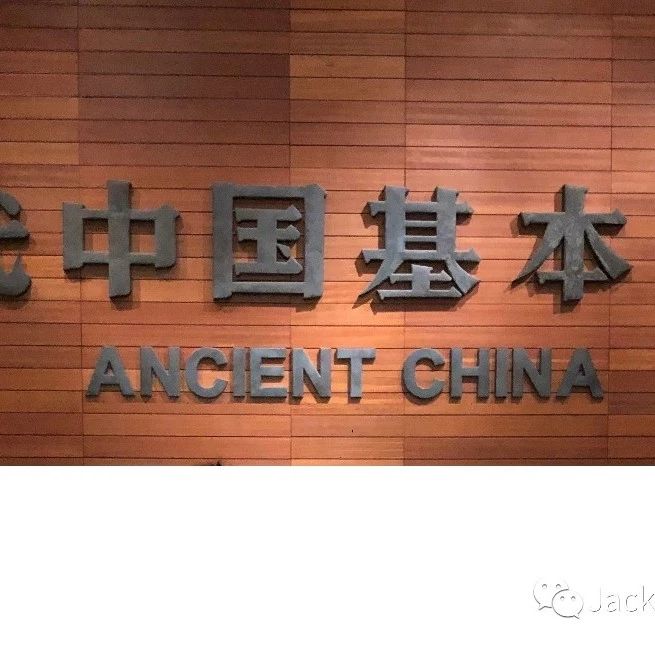Read History with Jack 30 - Ancient China
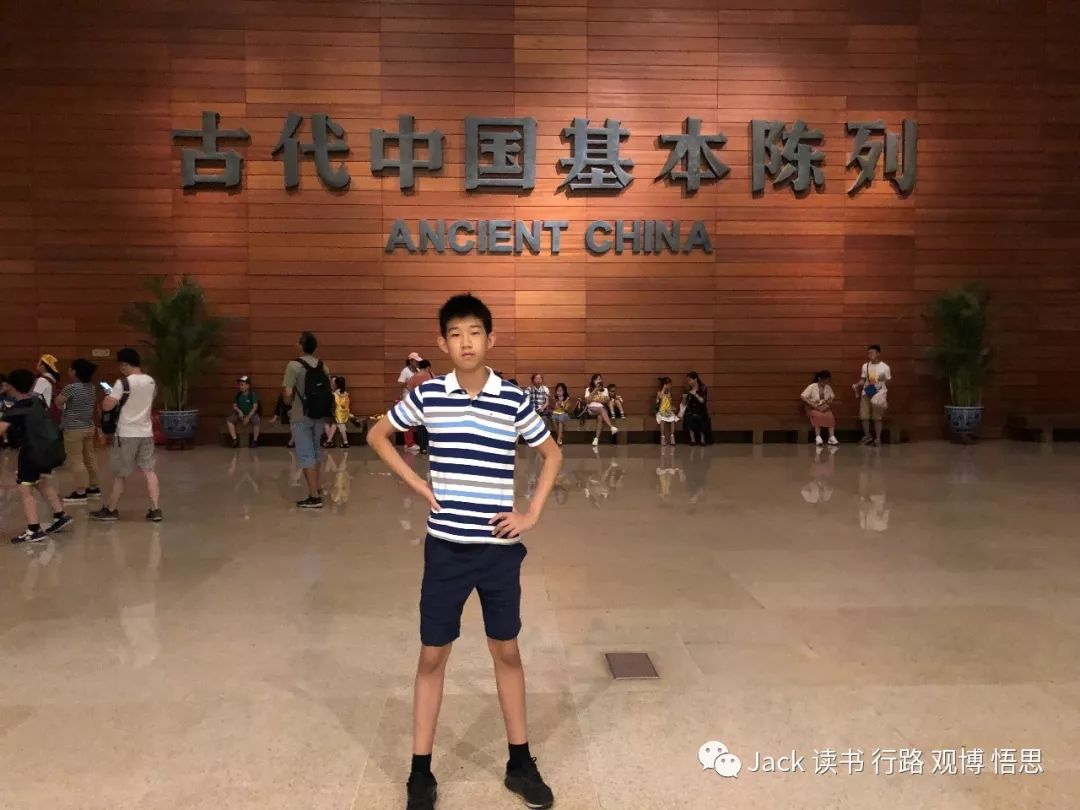
Recently, I visited an exhibition in the National Museum called “Ancient China”. As we know, China has 3200 years of written history, dating as far back as the Shang Dynasty, about 5000 years of legends, and nearly 9000 years of agriculture. During the span of 9000 years, China has nurtured many great and sophisticated cultures and civilizations.

Long before the debated Xia Dynasty, there were actually cultures that settled the lands of China, especially along the rivers. There were at least 28 cultures before the Xia, each of them having their uniqueness but also some similarities of each other. You can imagine China being a galaxy, and all of the different cultures dotted on it like stars. All of them burst into colorful lights and lighted up the lands.
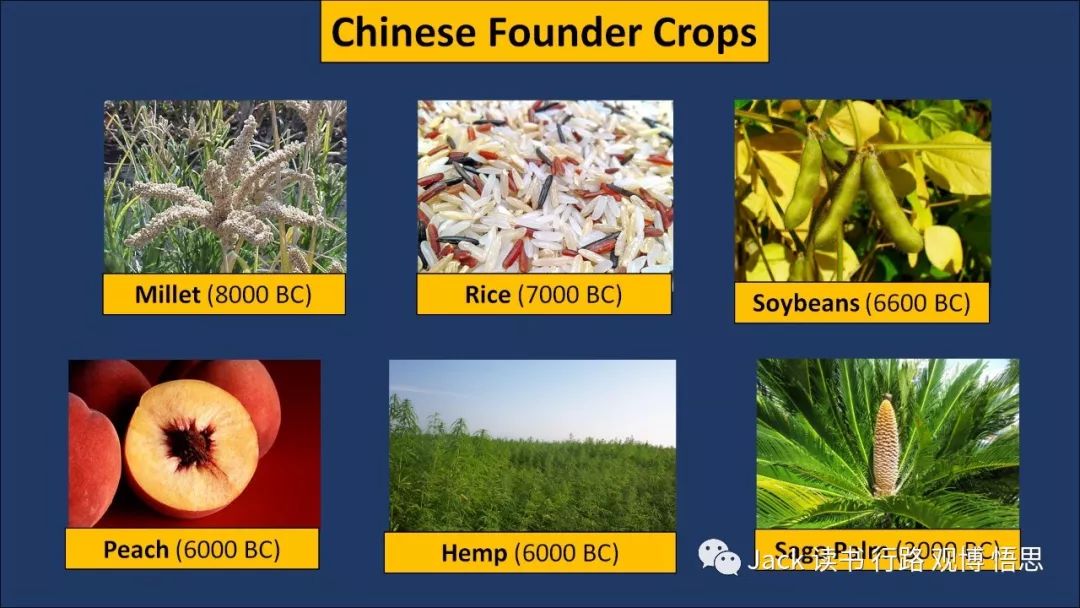
The ancient Chinese that lived before the Xia was very intelligent. It is wrong to consider them as wild men that didn't know anything. China, as we know, is one of the four places in the world that developed agriculture independently. We might have cultivated rice as far back as from 16000 to 7000 B.C.E at Xian Ren Cave in Jiang Xi Province. But that is still argued. However, if that is true then we can be one of the first groups of people to farm! I will feel thrilled and really excited! At Nan Zhuang Tou from 8500 to 7700 B.C.E there is clear evidence that ancient Chinese definitely grew millet and that is the earliest sure evidence of agriculture in China. Look at the time; it's nearly 10000 years ago that we developed farming! The people who lived in Nan Zhuang Tou were so smart and willing to explore and discover! Then, at Pei Li Gang culture from 7000 to 5000 B.C.E, archaeologists caught sight of men living in that period growing hemp. You can see that we were domesticating more and more as time progressed. At Jia Hu culture from 7000 until 5700 B.C.E, we discovered rice and the first signs of alcohol. Then finally at Kua Hu Qiao culture, ancient Chinese first domesticated peach at about 6000 B.C.E.
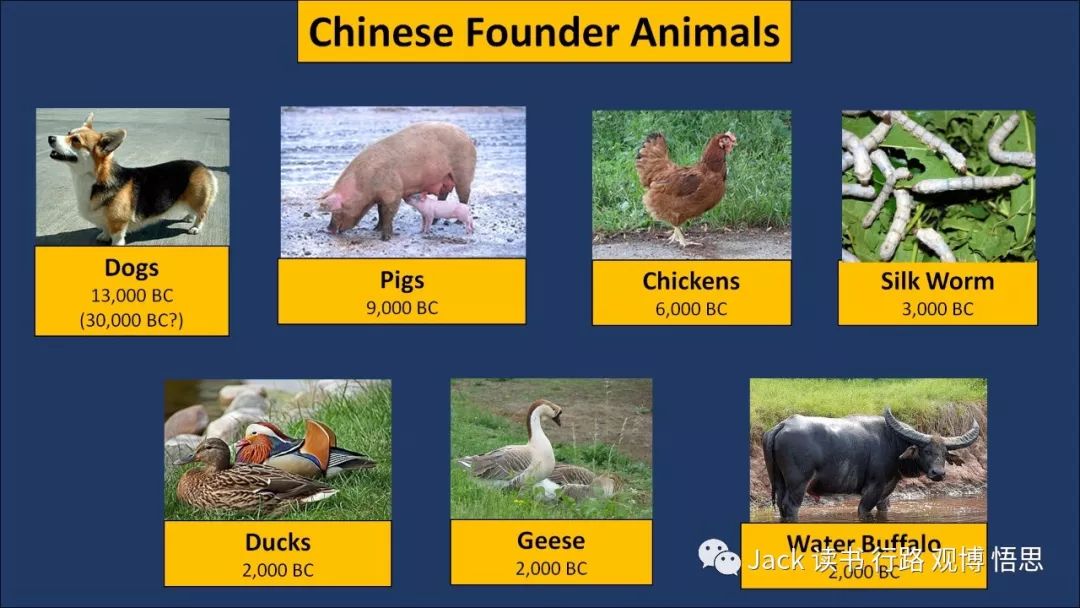
The ancient Chinese long before had discovered how to domesticate animals. At Nan Zhuang Tou culture, archaeologists had found evidence that dogs had been domesticated during that period of time. Ancient people probably used the method of selective breeding to tame animals and plants. They selected the most ductile and tractable ones and made them breed with each other. Their offspring would become more and more docile as generations passed. At Pei Li Gang culture,we found that the villagers already tamed sheep, cattle, and pigs. Moreover, some historians claimed that the Yang Shao culture from 5000 to 3000 B.C.E might have known how to deal with silkworms.
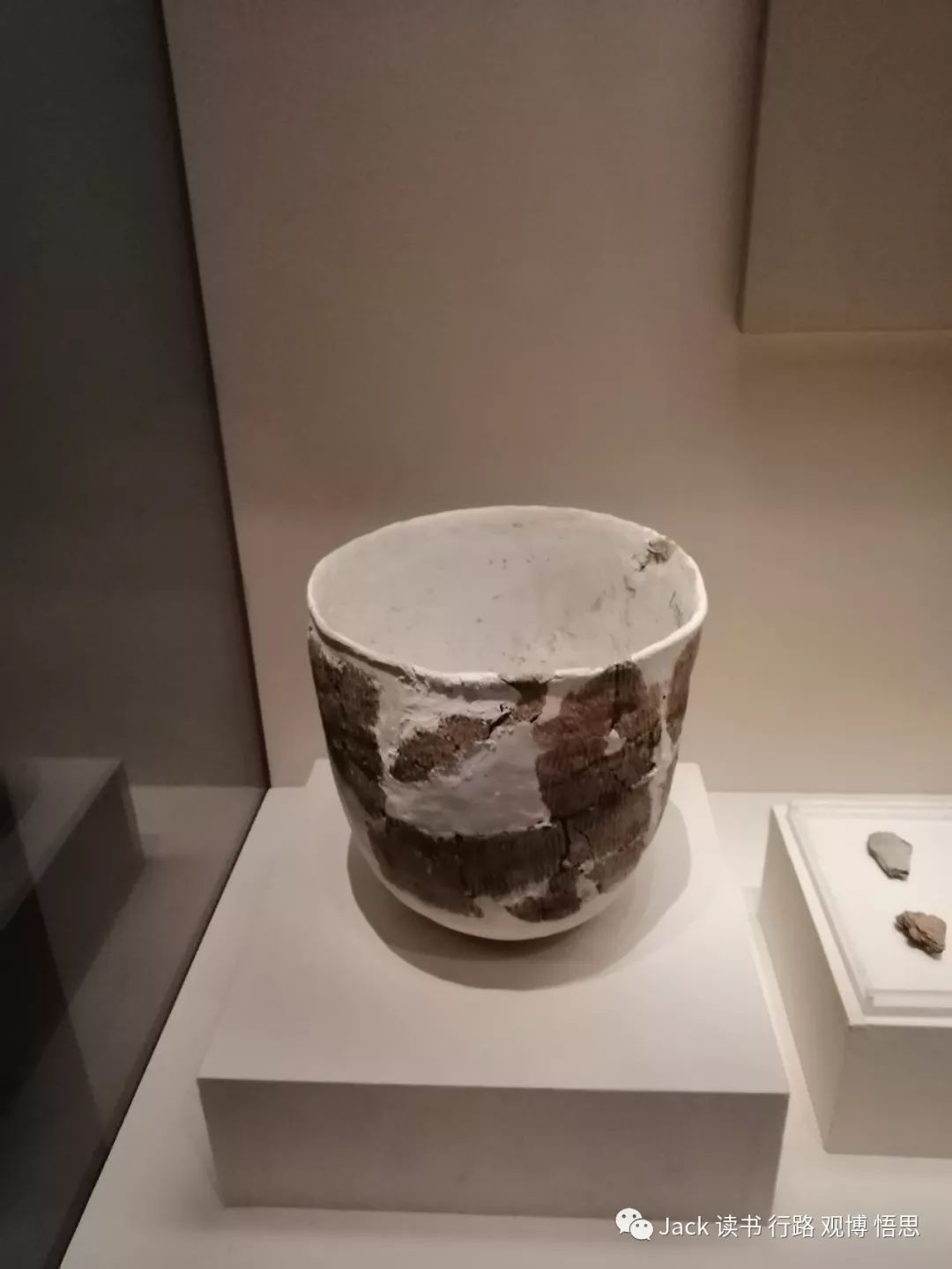
The pottery jar of Xianren Cave (c.16000-7000B.C.E)
Our ancestors were also very intelligent at making tools, and they made some pretty useful and delicate things. At Xian Ren Cave, archaeologists discovered the world's first pottery jar. This jar is about 10000 years old! At Pei Li Gang, we found some stone arrow heads, spear heads, chisels, axes, and sickles. Even though this is thousands of years before the modern era, still they could make such things out of stone is pretty shocking for me! After that at Kua Hu Qiao culture from 6000 to 5000 B.C.E, archaeologists dug up an ancient canoe which can show that people living in Kua Hu Qiao might have learned how to sail around in simple canoes. At Yang Shao culture, the first copper object in China was excavated. Then even more exciting, at Ma Jia Yao culture from 3100 to 2700 B.C.E, archaeologists found the first bronze object in China. Bronze would play a very important and big role in the future dynasties.
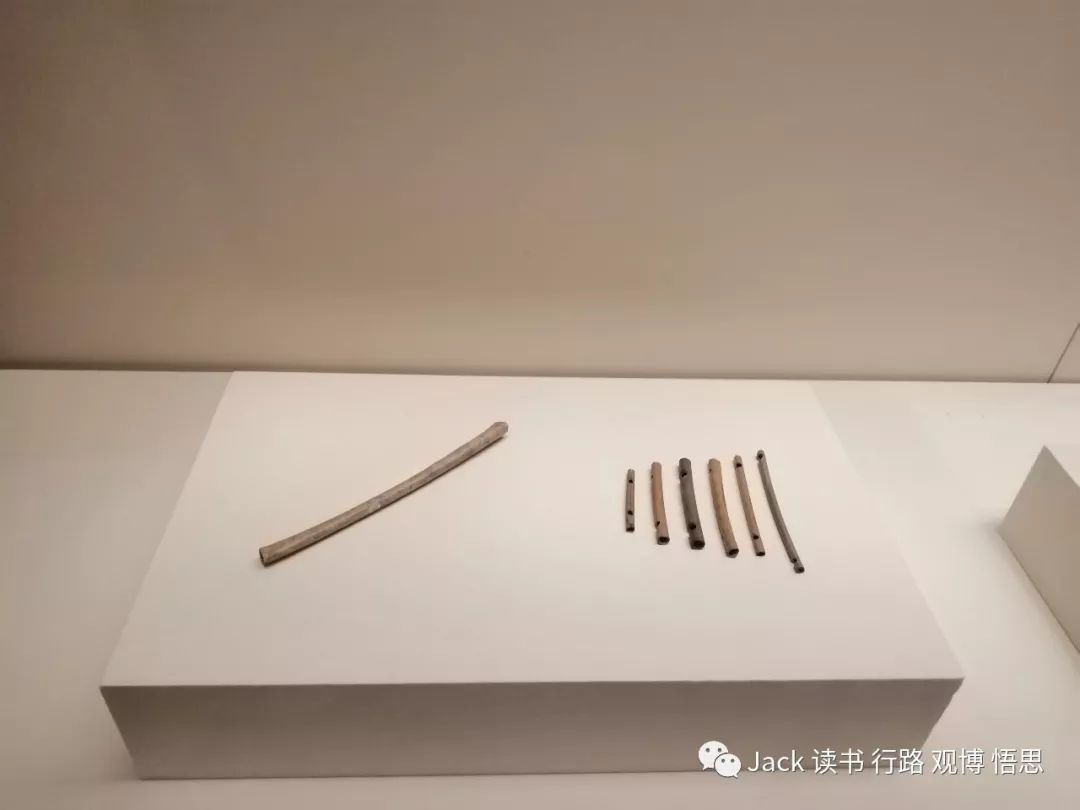
The Left: The flute from Jia Hu culture(c.7000-5700B.C.E)
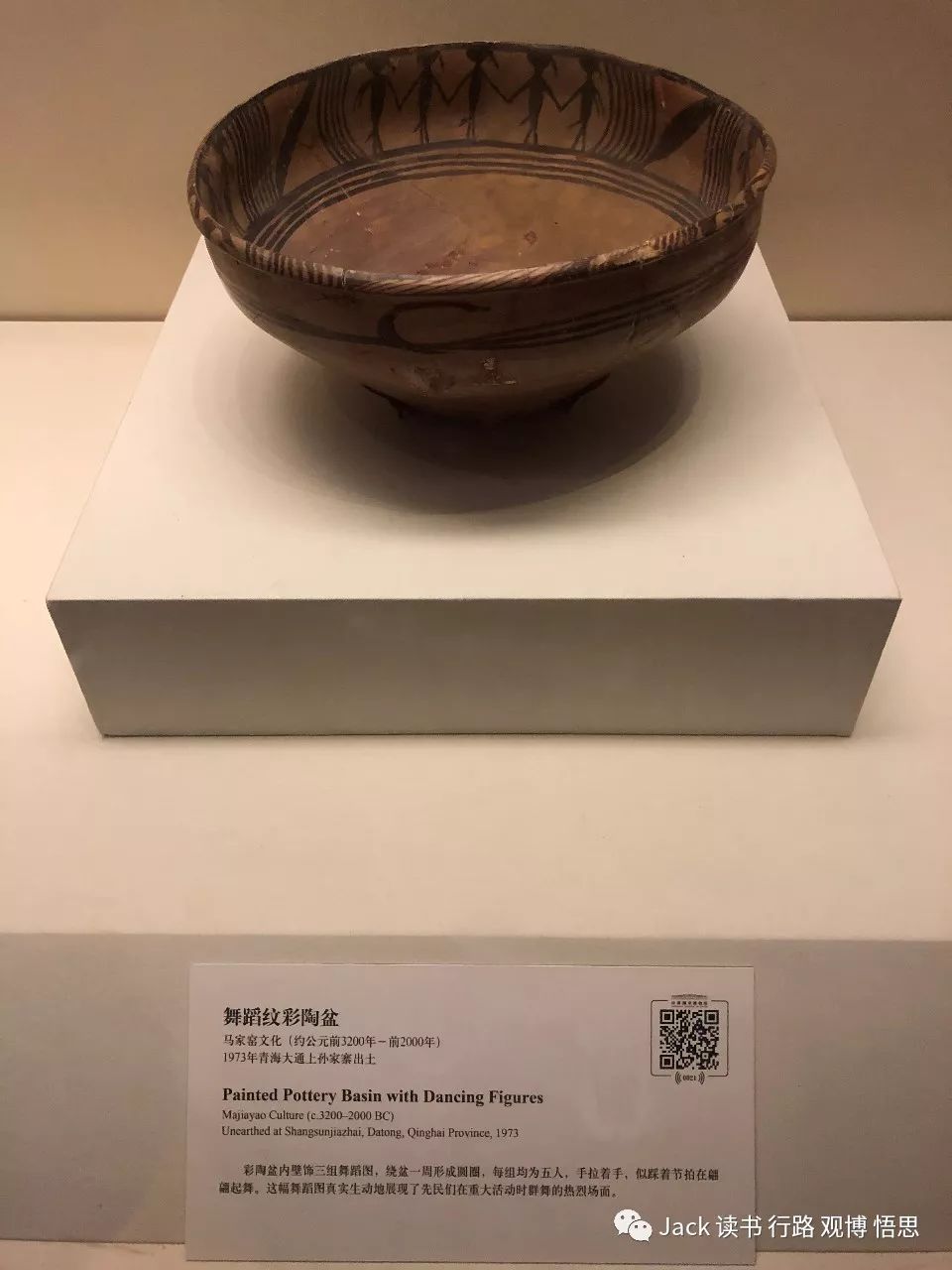
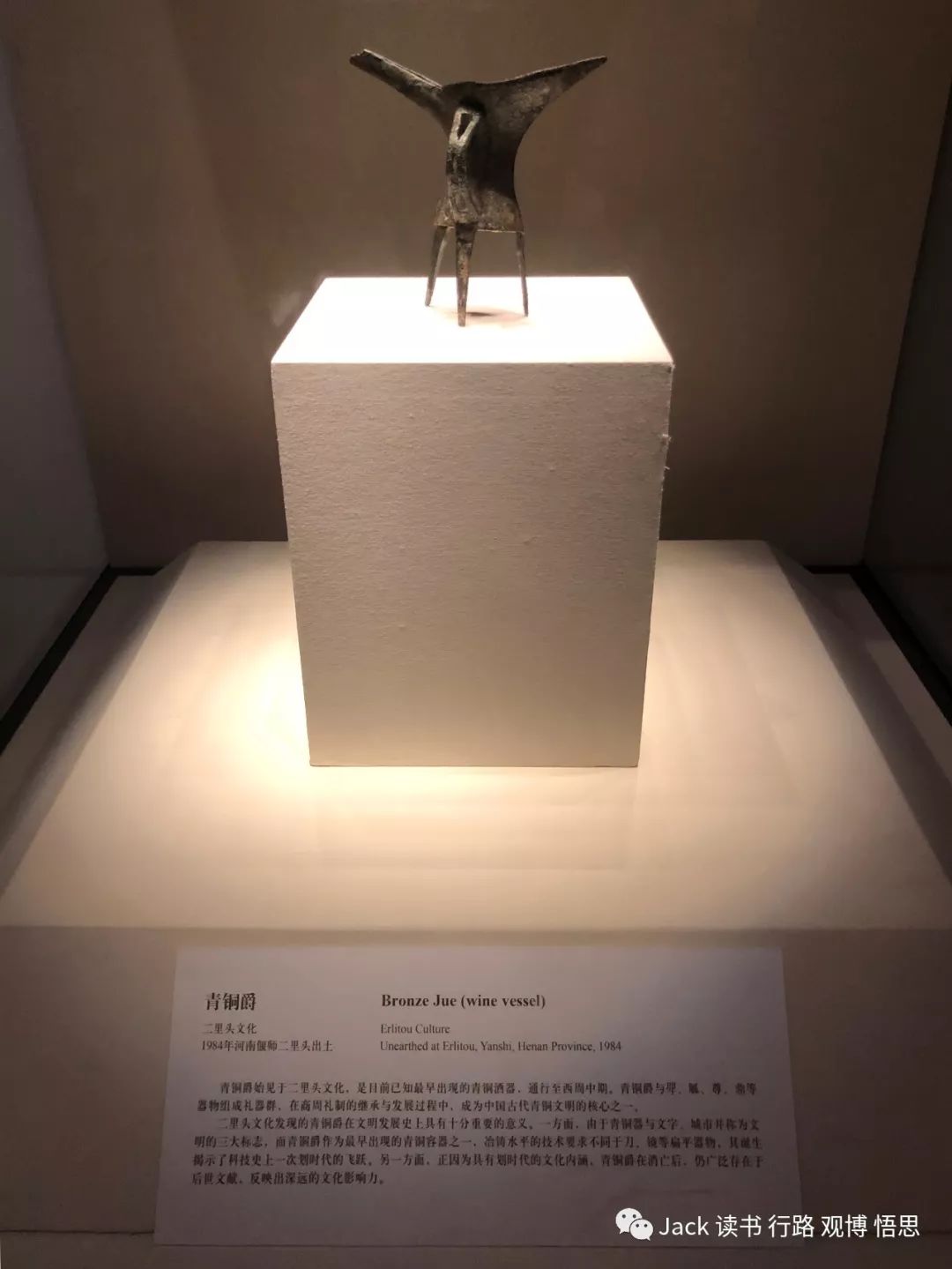
The ancient Chinese living before the Xia had such a love for their lives. At Jia Hu culture from 7000 to 5700 B.C.E we found the oldest flute made of crane bones in China. The people living in the area of Jia Hu were playing music! I can imagine a starry night where at a central bonfire, people were playing their flutes and some were dancing along.It would be a fabulous experience! At Ma Jia Yao, archaeologists excavated a painted pottery basin with dancing figures. This is solid evidence that people were probably enjoying their lives very much and were socializing. Then, at Er Li Tou (Xia?) from about 1900 to 1500 B.C.E archaeologists discovered a bronze Jue that is a kind of wine vessel. This can also show that maybe aristocrats at least were enjoying their lives. Look at how this vessel is beautifully shaped! The creator must have spent some time working on this piece. Can you imagine people living 3000 years ago cheering and drinking? (In addition, do you know that the bronze Jue and other bronze objects 3000 years ago were golden?)
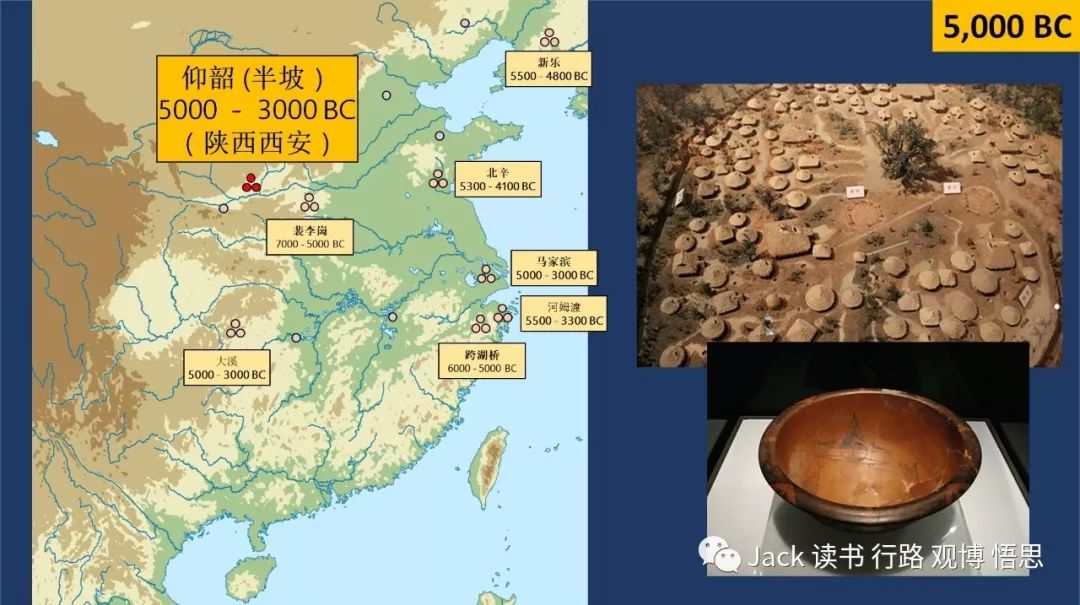
The prehistoric Chinese were emotional to their family members and friend. At Pei Li Gang, archaeologists had discovered the first burial site in China. At Jia Hu's graves, there are objects that are buried with the owner of this grave. As time passed, humans would add more belief sand rituals on the matter of death. This is evident at Yang Shao, where archaeologists excavated a lot of painted pottery basins with a human face and fish patterns. According to some speculations, these basins were usually put on top of a child's grave. Often times, there would be a hole in the center of a basin, allowing the child's soul to enter and leave freely. From this we can see, the ancient Chinese cared for their children very much and designed many beautiful things in memorization.
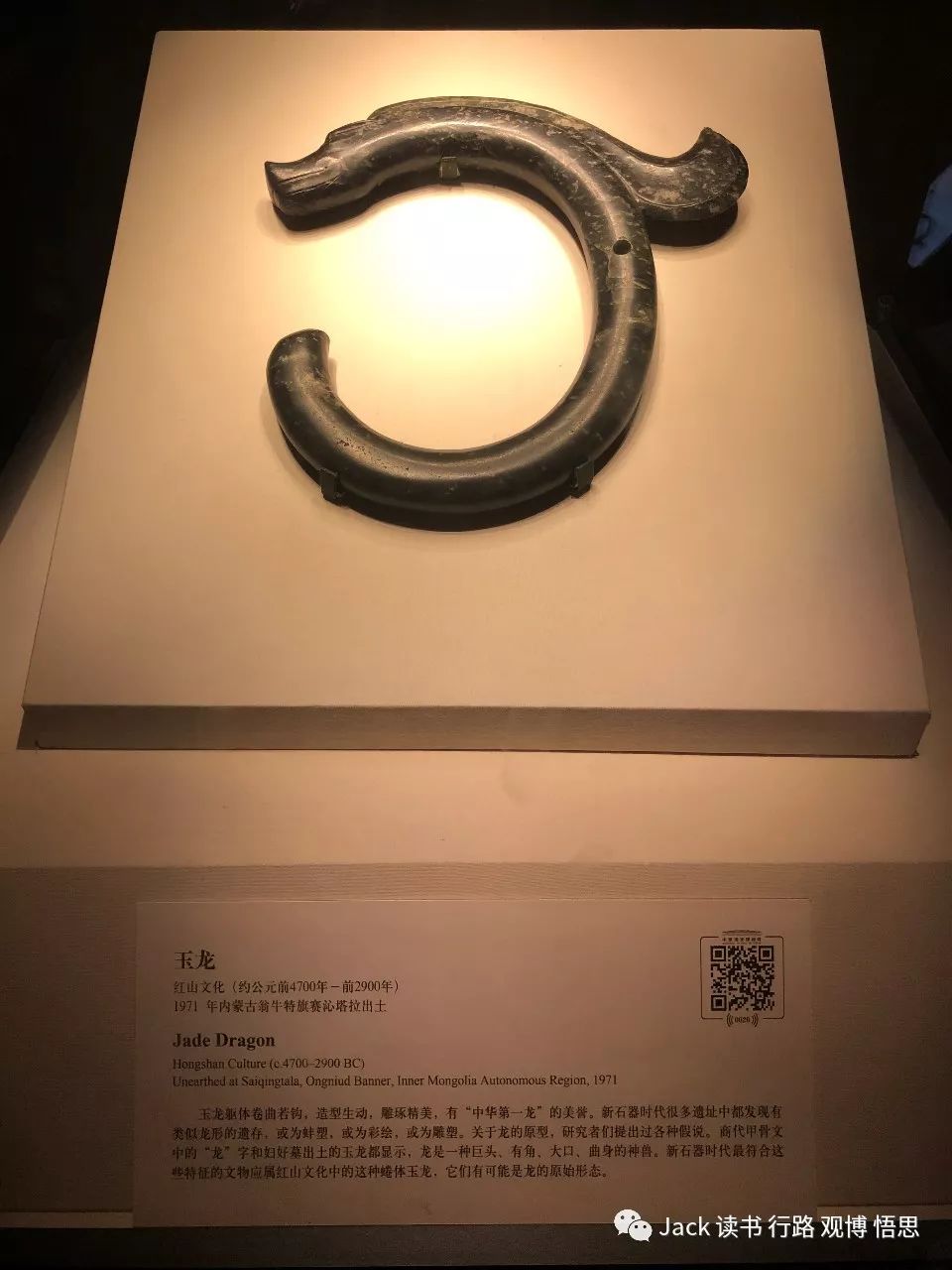
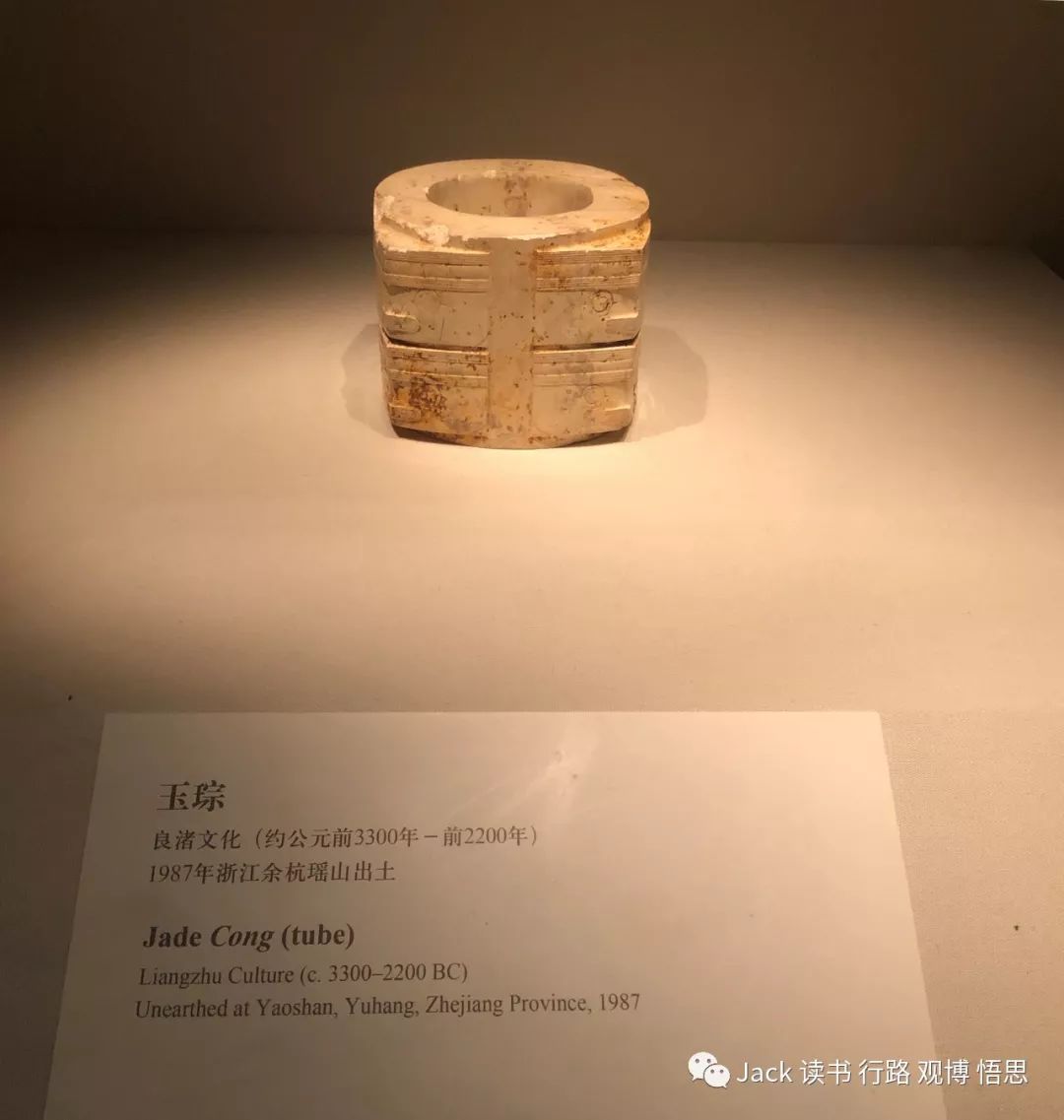
Religion played an indispensable role in cultures. People sometimes used supernatural explanations to explain events that they couldn't explain by using known methods at that time. For example, at Hong Shan culture from 4700 until 2900 B.C.E, archaeologists found a Jade Dragon. It was actually called the “First Dragon of China”. This shows us that back then there were at least beliefs present in Hong Shan societies, and its people paid attention to the belief. At Liang Zhu culture from 3400 to 2300B.C.E, we also discovered a Jade Cong that was used to communicate with Heaven. This can also show that people back then might be religious and believed in supernatural things. Moreover, our ancestors revered nature very much, but not us today. Even though it seems that people living in this modern age control everything, they pay little heed to nature. I think that the avarice of humans today can bring many unexpected disasters in the future. We should be like our ancestors and pay some respectable attention to nature.
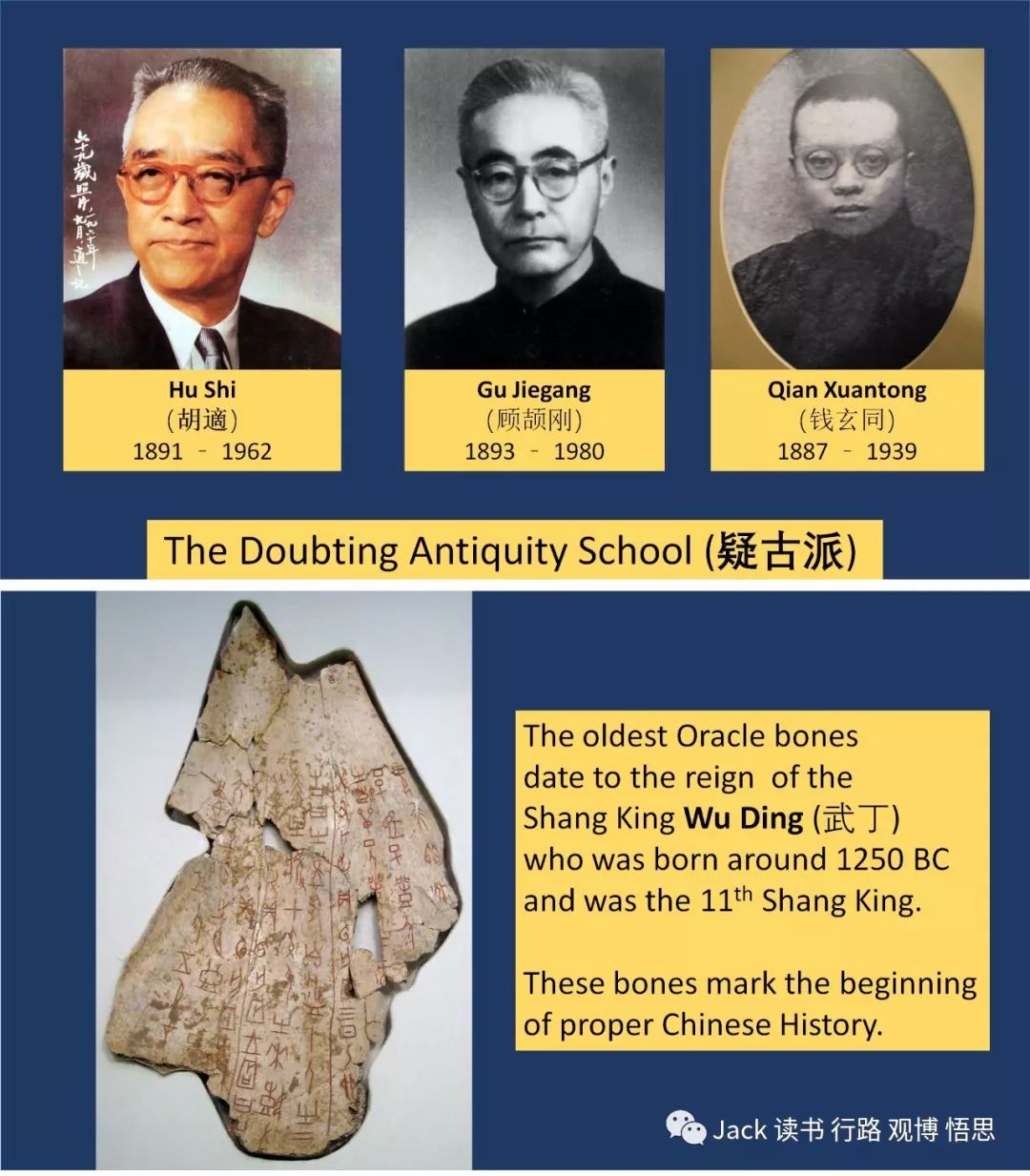
Last but not least, I want to discuss the matter of whether China has 5000 years of history. Identifying a civilization requires five standards, called CARTS: C for complex institutions, A for advanced cities, R for record keeping, T for technological developments, and S for specialization of labor. As we know, the Shang Dynasty is internationally acclaimed as the beginning of Chinese civilization, because it matches all of the standards. But the oracle bones of the Shang Dynasty are only 3200 years old. Symbols do appear in the earlier Jia Hu, Yang Shao, Long Shan, and Er Li Tou cultures. But whether they are writings are unsure and we do not have enough evidence. Also, in Romania and Serbia, there are also symbols appearing in the age of Jia Hu. Therefore, it is imprudent to create a slogan called “5000 years of history” just for national pride. Those 5000 years need more evidence.
In the early 20th century, there arose a school of thought called “Doubting Antiquity School”. This school became skeptical of the traditional historical narrative before the Zhou Dynasty. They pointed out that we do not have any actual records or artifacts from anything earlier than the Zhou Dynasty, so anything before them might be false. Most of our knowledge of the Shang and Xia Dynasties comes from the great historian Sima Qian and his great work, the “Shi Ji”. But Sima Qian lived 900 years after the Shang Dynasty and 1500 after the Xia Dynasty. The Doubting Antiquity School wondered how Sima Qian could possibly know all of these details about Chinese history that happened long before his life. However, in that century, the discovery of oracle bones proved that Sima Qian's order of kings and his record about the Shang Dynasty is correct. So, could he be right about the Xia Dynasty as well? For that reason, in the later 20th century, a scholar named Li Xueqin gave an influential speech where he pointed out that historians should leave the Doubting Antiquity movement and instead be part of a “Believing Antiquity” movement. Still, the debate goes on today, but it is healthy because through this way we can find the truth on whether the Xia and the previous eras existed or not. To lengthen our history, it requires our scholars to possess a mind more diligent and more logical.
The point of historical study is not to promote nationalism, or feel good about the past. It is to find the truth and understand what people are like in the past, so that we can learn from them, and use that knowledge to make the world better in our lifetimes.
- 本文标签: 原创
- 本文链接: http://www.jack-utopia.cn//article/504
- 版权声明: 本文由Jack原创发布,转载请遵循《署名-非商业性使用-相同方式共享 4.0 国际 (CC BY-NC-SA 4.0)》许可协议授权
